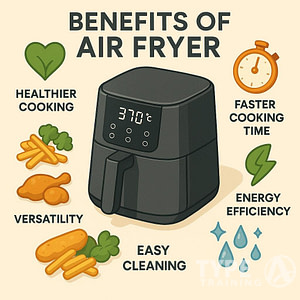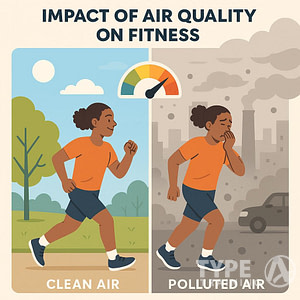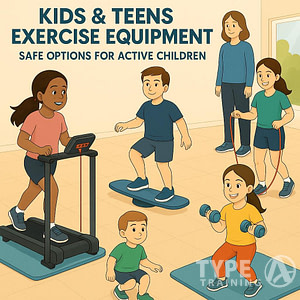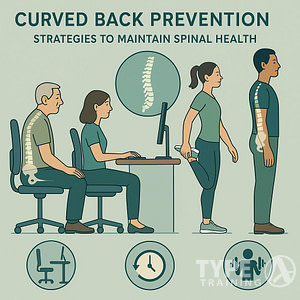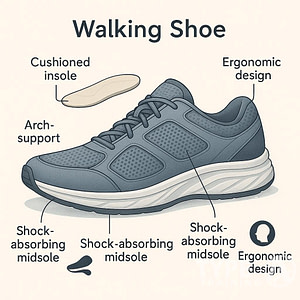Monitoring your heart rate during exercise is more than just a trend; it’s an effective way to gauge your workout’s intensity and maximize its benefits. By using a heart rate monitor, you can ensure that you’re exercising within your target heart rate zone, tailor your routine to better suit your fitness goals, and improve your overall health and performance. Whether you’re a seasoned athlete or just starting out, understanding the importance of your heart rate in relation to exercise can help you achieve more efficient workouts.
Incorporating a heart rate monitor into your fitness regimen can also provide valuable insights into your cardiovascular health and workout efficiency. These devices can help assess the safety of your exercise intensity, measure recovery time, and even track other health metrics that contribute to a holistic view of your well-being. With a variety of heart rate monitors available, from chest straps to smart rings, there’s a convenient option tailored to meet your needs and preferences, providing you with real-time feedback that can lead to more informed and effective exercise sessions.
Key Takeaways
- Utilizing a heart rate monitor helps tailor exercise intensity for optimum results.
- Real-time feedback from the monitor can enhance safety and measure workout efficiency.
- A range of heart rate monitors cater to varying preferences and can track additional health metrics.
Understanding Heart Rate and Exercise
Your heart rate during exercise is a crucial measure, providing insights into your workout intensity and overall cardiovascular fitness.
Popular posts:
The Science of Heart Rate and Physical Activity
Heart rate, measured in beats per minute (bpm), naturally increases during exercise to supply your muscles with more oxygen-rich blood. The more intense the activity, the higher your heart rate becomes. To determine the effectiveness of your workout and ensure you’re exercising within safe limits, understanding and monitoring your heart rate is essential. Exercise professionals often categorize workout intensity into different heart rate zones, each representing a percentage of your maximum heart rate, which can be roughly estimated by subtracting your age from 220.
Age, Fitness Level, and Resting Heart Rate
Your age and fitness level play significant roles in your heart rate response to exercise and your resting heart rate. Typically, the fitter you are, the lower your resting heart rate will be, signaling a more efficient heart function. Here’s a brief overview:
- Resting Heart Rate: For most adults, it’s between 60 to 100 bpm.
- Fit Individuals: They often have a resting heart rate below this average.
- Age Factor: Maximum heart rate tends to decrease as you age.
Monitoring your heart rate and considering these factors can help you tailor your workouts to better suit your cardiovascular fitness goals.
Benefits of Monitoring Heart Rate
Monitoring your heart rate during exercise offers valuable insights into your fitness routine. It helps you ensure that you’re training within the appropriate heart rate zones, adapt your workouts based on real-time data, and protect your health by preventing overexertion.
Optimizing Your Workout Intensity
To maximize the benefits of your workout, it’s crucial to exercise at the right intensity. By using a heart rate monitor, you can pinpoint your target heart rate zone, which varies depending on your age and fitness goals. Training within this zone helps you focus on different fitness objectives, like improving aerobic capacity or burning fat.
Tracking Fitness Progress
A heart rate monitor is an effective tool to track your fitness progress over time. As your cardiovascular health improves, you’ll notice changes in your average resting heart rate and how quickly your heart rate recovers after workouts. These metrics allow you to set more accurate fitness goals and adjust your training as needed.
Preventing Overexertion and Injury
Pushing your body beyond its limits can lead to fatigue or, worse, injury. A heart rate monitor alerts you when your heart rate spikes above your maximum heart rate, signaling potential overexertion. By staying informed, you can take proactive steps to avoid these risks and enjoy a safer workout experience.
Types of Heart Rate Monitors
Selecting the right type of heart rate monitor is vital for tracking your fitness progress accurately. Whether you opt for a traditional chest strap or a more modern wearable, understand the distinctions and technologies will guide you to the best choice for your routine.
Chest Straps vs. Wearable Heart Rate Monitors
Chest Straps:
- Accuracy: Utilize electrodes that make direct contact with your skin, often considered more accurate.
- Connectivity: Pair with other devices via Bluetooth or ANT+ to track your workout data.
Wearable Heart Rate Monitors:
- Convenience: Typically integrated into fitness trackers and smartwatches, worn on the wrist for ease of use.
- Features: May include additional sensors like GPS and sleep tracking, for a comprehensive fitness overview.
Features and Technologies
When exploring features and technologies in heart rate monitors, prioritize your specific needs:
- GPS Integration: Useful for runners and cyclists who want to map routes and track distances.
- Water Resistance: Essential for swimmers or those involved in water-based activities.
- Battery Life: A critical consideration based on the length and frequency of your workouts.
Remember, a heart rate monitor, whether it’s a chest strap or a wearable device, should complement your fitness regime without complicating it. Choose one that aligns with your goals and seamlessly integrates into your exercise routine.
Related: Top Heart Rate Monitors: Chest Strap, Armband, Watch in 2024
Are Ring Heart Rate Monitors Accurate?
When considering the accuracy of ring heart rate monitors, such as the Oura Ring, it’s important to look at both technology and comparison studies. Ring monitors like Oura use photoplethysmography (PPG), which measures blood flow changes using light reflected back from your skin. The Oura Ring, specifically, uses red infrared light in this process, potentially offering deeper skin penetration and capturing a wide array of measurements, including heart rate variability (HRV) and blood oxygen levels.
In terms of accuracy, the Oura Ring has been compared to medical-grade ECGs in controlled environments, demonstrating high reliability. These specially controlled conditions have shown an impressive 99.9% reliability for resting heart rate and 98.4% for HRV. However, it’s worth noting that some studies may be sponsored by the manufacturing company, which could introduce bias.
Furthermore, direct skin contact that rings offer likely enhances monitoring steadiness over devices like phones. Nonetheless, during intense physical activity, all PPG devices, rings included, may face accuracy challenges.
Product comparisons have noted that while the Oura Ring and similar products are not perfect, they are among the best options currently available for consumers. They stand out with additional features like a readiness score, which accounts for various health metrics to recommend activity levels for the day ahead.
Remember, when using ring monitors, they should be considered tools for personal health insights rather than replacements for professional medical devices, especially during vigorous exercises where readings can be less accurate.
Understanding the Target Heart Rate Zones
Heart rate zones are divided into ranges that correspond to exercise intensity levels, from low to high. Here’s a simple breakdown of the main zones:
- Zone 1 (50-60% of maximum heart rate): Light intensity, suitable for warming up and cooling down.
- Zone 2 (60-70%): Moderate intensity, often considered the “fat-burning” zone.
- Zone 3 (70-80%): The aerobic zone, perfect for improving cardiovascular fitness.
- Zone 4 (80-90%): The anaerobic zone, where higher intensity workouts take place.
- Zone 5 (90-100%): Maximum effort, typically used for short bursts in interval training.
Exercising within these zones can ensure that you’re working hard enough to attain a benefit, but not so hard that you risk injury or burnout.
To help you visualize the different heart rate zones, below is a table based on the American Heart Association’s Target Heart Rates Chart:
| Zone | Percentage of Maximum Heart Rate | Perceived Exertion |
|---|---|---|
| 1 | 50-60% | Very light to light |
| 2 | 60-70% | Light to moderate |
| 3 | 70-80% | Moderate to hard |
| 4 | 80-90% | Hard to very hard |
| 5 | 90-100% | Very hard to maximal |
Using a heart rate monitor during exercise allows you to stay within the desired heart rate zone for your fitness goals, whether that’s improving general health, enhancing endurance, or increasing strength. By regularly tracking and adjusting your intensity based on these zones, you stand to gain a more efficient and effective workout regime.
Integrating Heart Rate Data into Your Exercise Routine
Incorporating heart rate data into your exercise routine allows for precision and control over your workout intensity. By analyzing this information, you’re able to tailor your efforts to meet specific fitness goals.
Utilizing Monitors During Different Exercises
Treadmills: While using a treadmill, monitor your heart rate to ensure that you’re training within the appropriate intensity zone for your goals. If the goal is to improve stamina, aim to stay within your aerobic heart rate range for a prolonged period.
Cycling Bikes: When cycling, your heart rate can help you maintain a steady cadence, making sure you’re not overexerting early on. It’s beneficial for interval training where you oscillate between high intensity and recovery phases.
Rowing Machines: Heart rate monitors can gauge the effort you exert during rowing. Aim for higher heart rates to build muscular endurance and lower zones for longer, more sustained workouts.
Ellipticals: Use the heart rate monitor to maintain a moderate intensity level that’s conducive to fat burning without straining your joints or risking overtraining.
Adjusting Intensity Based on Real-Time Data
When engaging in any exercise, your real-time heart rate data is a powerful tool to adjust intensity. If you notice your heart rate is lower than your target zone during a vigorous workout, you can increase the intensity of your activity—be it by speeding up your pace on the treadmill or increasing resistance on a cycling bike.
Conversely, if your heart rate escalates above your desired range, particularly during times of recovery or light activity, take that as a cue to decrease the workout intensity. Slowing down your rowing stroke or reducing the incline on an elliptical can help bring your heart rate back into the optimal range. This immediate feedback ensures that you’re working out efficiently and safely, according to your body’s cues.
Maximizing Weight Loss and Cardiovascular Health
Using a heart rate monitor can be a game-changer if you’re focused on weight loss and enhancing your cardiovascular health. By providing real-time data on how hard your heart is working, you can tailor your exercise to meet your specific health goals.
Fat Burning and Calorie Counting
Heart rate monitors are essential tools to ensure you are exercising within the optimal heart rate zone for fat burning. Your body prefers different energy sources depending on the intensity of exercise. At moderate intensity—typically 64% to 76% of your maximum heart rate—your body is likely to burn more fat relative to carbohydrates. Keep track of your heart rate to stay within this zone, maximizing caloric expenditure and targeting fat loss.
- Optimal Zone for Fat Burning: 64% – 76% of Maximum Heart Rate
- Calories Burned: Higher accuracy with heart rate data
Boosting Cardiovascular Fitness
Maintaining a consistent, appropriate heart rate during exercise is crucial for boosting cardiovascular fitness. Training in different heart rate zones challenges your cardiovascular system, which can lead to improvements over time. A higher cardiovascular fitness level has been associated with a reduced risk of heart attack and other heart diseases. Utilize the heart rate monitor to guide your workouts, keeping your heart rate in the desired zones to strengthen your heart and improve overall cardiovascular health.
- Vigorous Intensity Zone: Improves cardiovascular capacity
- Disease Risk Reduction: Linked to lower incidence of heart-related diseases
Measure Exercise Recovery
Using a heart rate monitor during exercise allows you to measure your exercise recovery effectively. Recovery refers to how swiftly your heart rate returns to a resting state after intense activity.
- What is Recovery?
Your recovery rate is critical for assessing your cardiovascular fitness. The quicker your heart rate normalizes post-exercise, the more physically fit you typically are. - How to Track Recovery:
- Measure your heart rate immediately after your workout.
- Wait one minute, then measure again.
- Compare these two numbers to see how much your heart rate has reduced.
Research supports that a faster recovery rate is generally a sign of better cardiovascular condition. To gauge your personal recovery, consistency in tracking your heart rate post-exercise is key.
Here are few tips to optimize the utility of your heart rate monitor for recovery assessment:
- Use the same cool-down routine to ensure consistency in measurement.
- Track your recovery rate over time to observe trends or improvements.
- Integrate workouts aimed at improving cardiovascular fitness to potentially enhance your recovery rate.
Advanced Heart Rate Monitor Features
When incorporating heart rate monitors into your fitness routine, advanced features like GPS integration and the ability to track heart rate variability can greatly enhance your training efficiency. Leveraging these capabilities brings a quantitative aspect to monitor your progress and tailor your workouts.
GPS Integration and Exercise Mapping
GPS Integration allows you to precisely track your outdoor exercises, giving you a map of your route post-workout. This is particularly useful for runners and cyclists, as it helps you understand not just how far you’ve gone but also the intensity of different segments of your route. Exercise Mapping is often paired with a compatible smartphone app, providing you visual insights into your performance over different terrains and elevations, which can be essential for tailored high-intensity training plans, including HIIT.
Accuracy and Heart Rate Variability
The accuracy of a heart rate monitor is crucial, especially during sessions of high-intensity training. Advanced monitors can detect the minute fluctuations in time between each heartbeat, known as Heart Rate Variability (HRV). HRV can be a key indicator of your cardiovascular health and recovery status, influencing how you plan your HIIT workouts. Some models, such as those offered by Fitbit, integrate these metrics into their devices and apps, enabling you to make data-driven decisions about your fitness and recovery.
Track Different Health Metrics
When you use a heart rate monitor during your exercise routine, you’re accessing a valuable tool that goes beyond just measuring your heart rate. Modern monitors have evolved to offer you a comprehensive snapshot of various crucial health metrics which contribute to an overall understanding of your wellbeing.
- Stress Levels: Many monitors can gauge your stress by analyzing heart rate variability, indicating when you may need to take a moment to relax.
- Activity Levels: Beyond workouts, these devices often track your daily activity levels, ensuring you’re aware of how active you are throughout the day, from steps taken to calories burned.
- Sleep Quality: Monitoring your sleep patterns can provide insights into the quality and duration of your rest, which is essential for recovery and overall health.
By integrating these metrics, a heart rate monitor supports you in identifying patterns that could affect your fitness goals. For example, a noticeable change in your sleep quality could explain fluctuations in your day-to-day energy levels, and recognizing higher stress levels through your monitor could prompt you to incorporate more mindfulness and recovery into your routine.
Moreover, by keeping track of these metrics consistently, you can make informed decisions regarding diet, exercise intensity, and even when it’s best to rest. This multi-dimensional data collection ensures that you’re not just working out smarter but also cultivating a well-rounded approach to maintaining and improving your health.
Related: Top Heart Rate Monitors: Chest Strap, Armband, Watch in 2024
Frequently Asked Questions
In this section, you’ll find precise responses to common inquiries regarding the role of heart rate monitoring in exercise and its benefits for your fitness journey and health.
Why is monitoring your heart rate important before, during, and after exercise?
Monitoring your heart rate is crucial for understanding how your body responds to exercise. It permits you to gauge the intensity of your workout and ensure you’re exercising within a safe range to prevent over-exertion or injury.
How can heart rate monitoring improve overall wellness?
Heart rate monitoring can aid in optimizing your fitness regimen to align with your wellness goals. By ensuring you work out at the correct intensity, you can improve cardiovascular health, burn calories effectively, and boost overall stamina.
In what ways can your heart rate indicate your current fitness level?
Your resting heart rate and how quickly your heart rate returns to normal post-exercise can signal your fitness level. A lower resting heart rate often suggests better cardiovascular fitness, whereas a heart rate that quickly decreases after activity indicates efficient recovery and conditioning.
What are the potential risks of having a high heart rate while exercising?
A high heart rate when exercising can indicate your body is under intense stress. Persistently exceeding recommended target heart rate zones can increase the risk of cardiovascular strain or other exercise-related injuries.
How can a heart rate monitor enhance your workout routine, especially for running?
A heart rate monitor can tailor your running regimen to become more precise by allowing you to stay within your target zones. This facilitates more structured interval training and helps prevent both undertraining and overtraining.
What methods are effective for determining your ideal target heart rate?
Calculating your target heart rate typically involves subtracting your age from 220 to estimate your maximum heart rate. From there, you can determine your desired intensity zone, which is usually a percentage of that maximum. Health professionals endorse using tools or formulas to yield the most reliable results.








